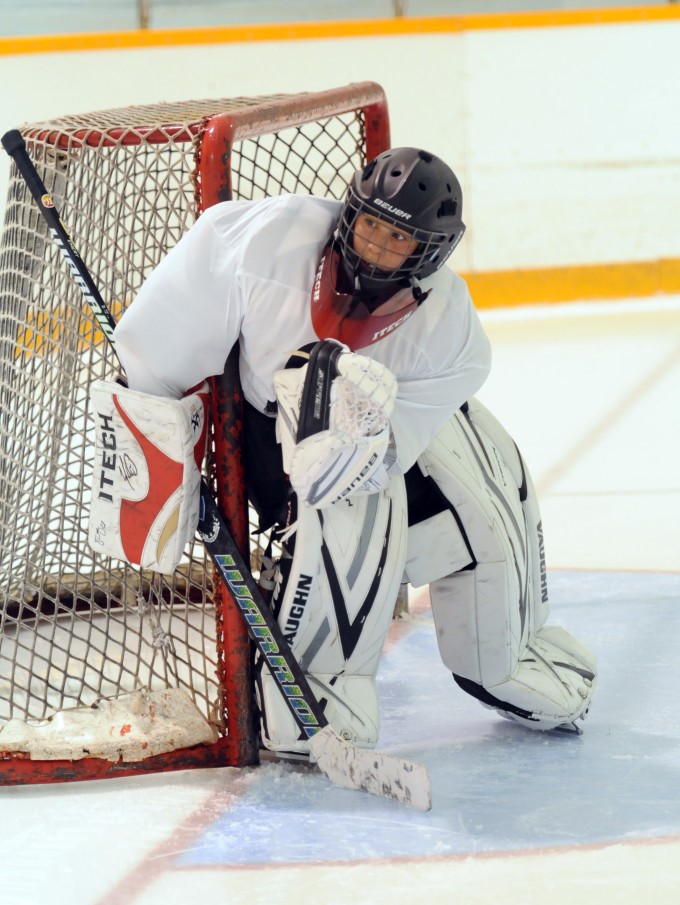
Goalie Training: Neutralizing Passing Threats
Whether new to goalie training, or new to our goalie training programs, at Goalie Army Academy, we are noticing that many goaltenders coming through our doors for the 1st time are not doing a simple technique which can make a huge difference in their game.
Like skaters, goalies must place themselves in positions which help them to be ready for anything. Whether being set for a shot, or anticipating a passing play, considering all of the potential threats around them, goalies must give themselves the best opportunities to recognize, respond, and react effectively (see R3E System).
Likely the easiest element of the goaltender’s game, stick positioning is essential in any game situation. Despite students being taught how to properly hold their goalie stick, many goalies do not recognize the importance of stick angles, and positional stick placement in order to neutralize passing threats. That’s why we implement this into ll of our goalie training programs.
 Simple Sticks – Behind the Net
Simple Sticks – Behind the Net
Although some goaltenders at younger levels of hockey may have some difficulty with tracking the puck behind the net, having the puck positioned below the goal line is likely the best place for the goaltender for one simple reason: it’s next to impossible to score from below the goal line.
Combining visual tracking and accurate timing during their goalie training, goalies enable themselves to gain position at their posts in order to be set for wrap-arounds or quick passing plays to the front of the net during competition. By adding their stick into the mix at the post position, they ensure that they are in a position to use it aggressively when facing tight wrap-arounds, or to jam up passing lanes.
Deep Corner – Deep Angles
As the puck is carried from behind the net toward the deep corner, the zone neutralized by the goaltender’s stick becomes less and less, and the chance of having to move further across the crease to track passes increases.
Despite the smaller neutralized zone, goalies can still prepare themselves to move with explosive power while challenging the pass. As the goaltender loads their power with a deeper knee bend, they should simultaneously angle their stick in order to ramp the puck up and over any threats on the glove-side post, or load their explosive power while maintaining the blocker-side post stick position.
For more information about stick placement at the post position, check out this helpful article.
Dos and Don’ts
In order to be effective with neutralizing zones and breaking up passing plays, during our goalie training sessions, our students are taught that they need to keep their stick positioning simple at the post position.
Much like we teach blocking techniques, goaltenders understand the necessity to simplify their game. With blocking, the goaltender recognizes that if the puck is not coming directly at them to absorb, that they will have to react with their arms. At the post position, the goaltender should look to apply the same simplicity.
Although challenging the pass is good, the goaltender should look to refrain from opening passing lanes through their crease, or reaching too far with their stick, but instead, only reacting outward to passes within their reach while maintaining proper balance and weight distribution.
Opening Passing Lanes
Positioning the heel of the stick as close to the toe of the pad as possible is the best placement for goalies to practice during their goalie training sessions. This enables the goaltender to force the pass to be executed to the outside of the toe of the stick, keeping their crease a no-pass zone.
If the goaltender were to position the heel of their stick away from the toe, this would result in a hole in their passing lane coverage and therefore open the passing lane for the puck to get through.
Reaching
Immediate or initial placement of the heel of the stick away from toe of the pad not only opens passing lanes, but it causes balance and weight distribution concerns created by leaning too far toward the puck. Doing so may result in a domino effect of slower tracking and timing due to the need to take indirect paths to gain a square position. Ideally, in situations which require goaltenders to move cross-crease quickly, they will want to push with purpose and stop set. Unfortunately, reaching will cause issues with being capable of doing so.


Leave a Reply